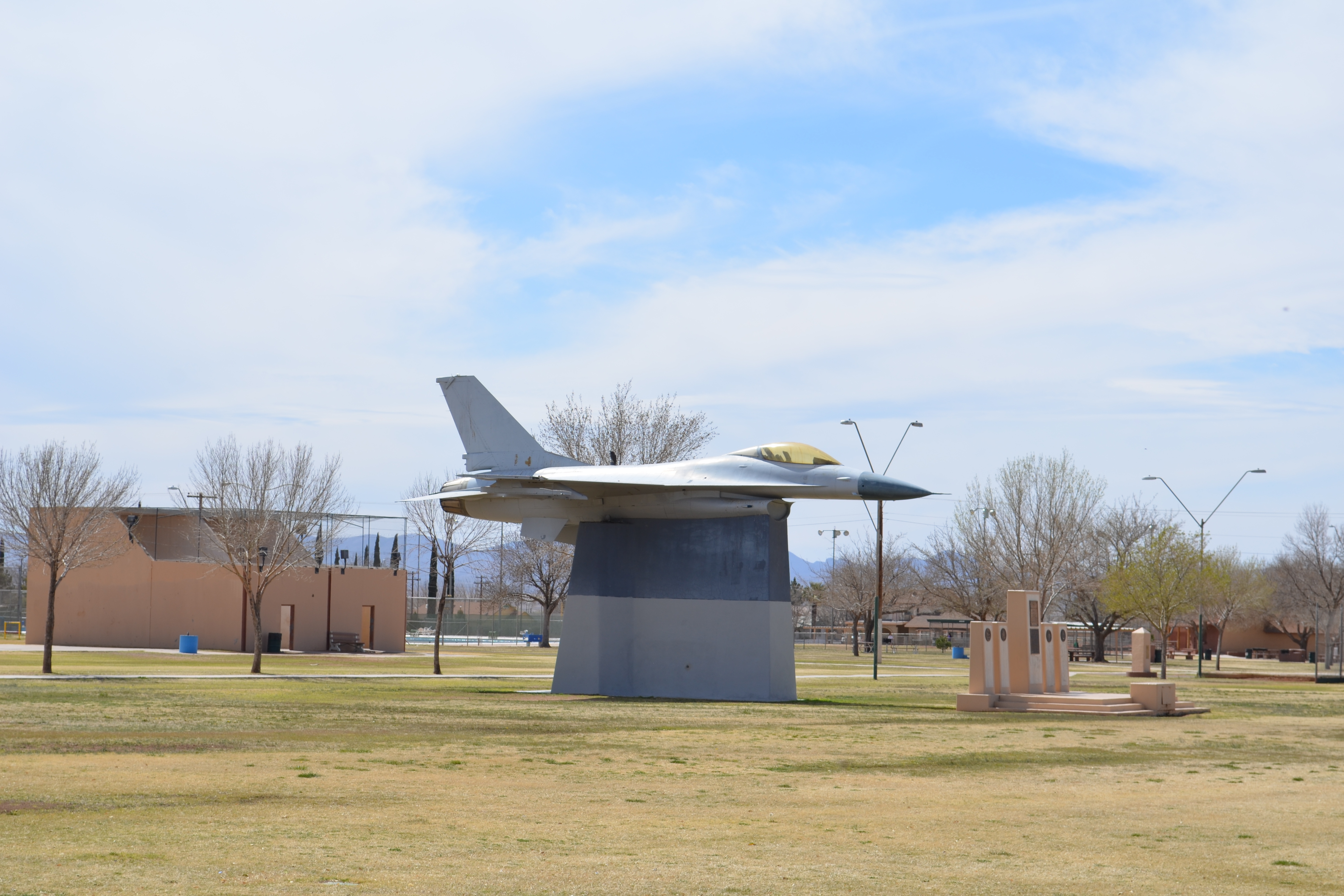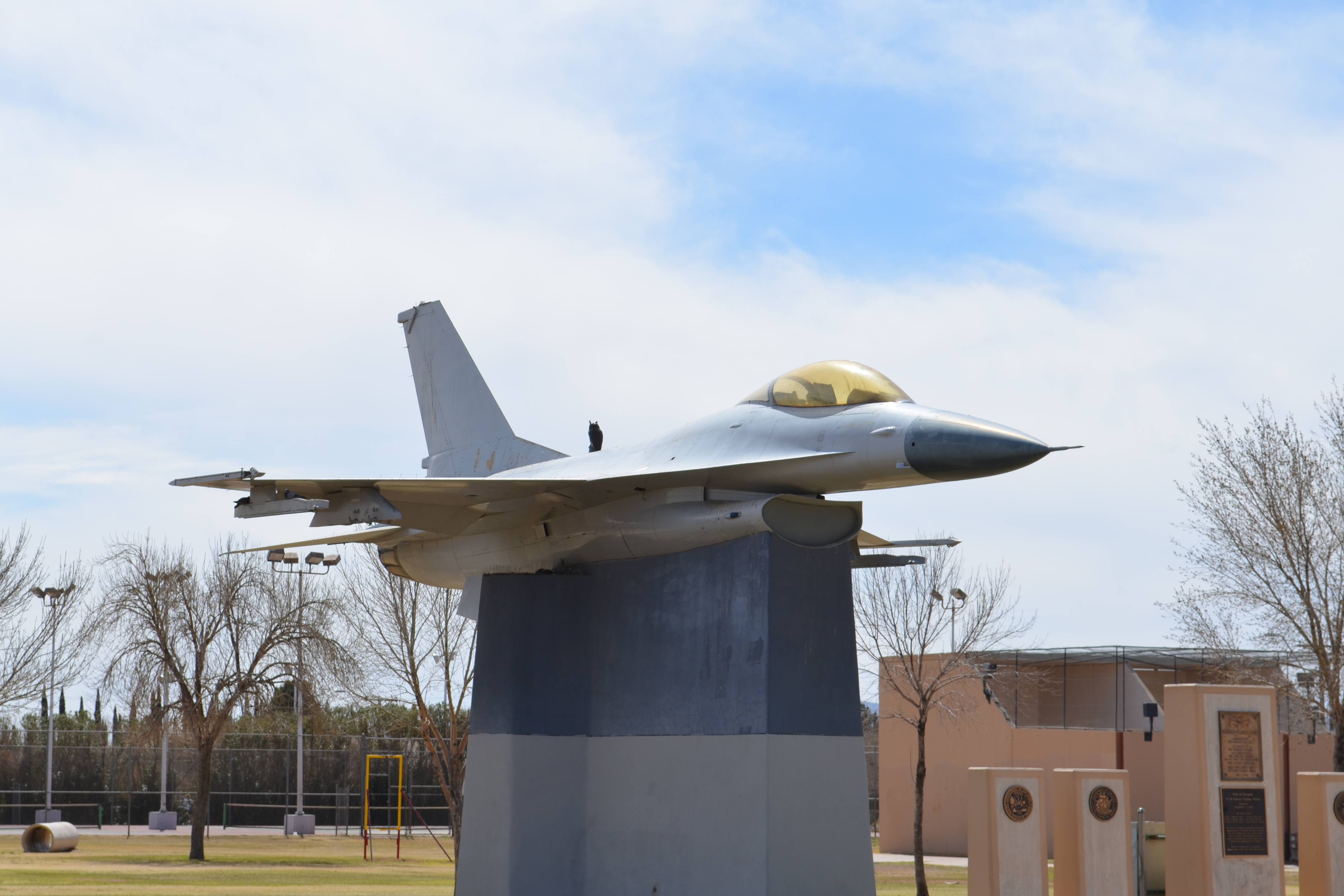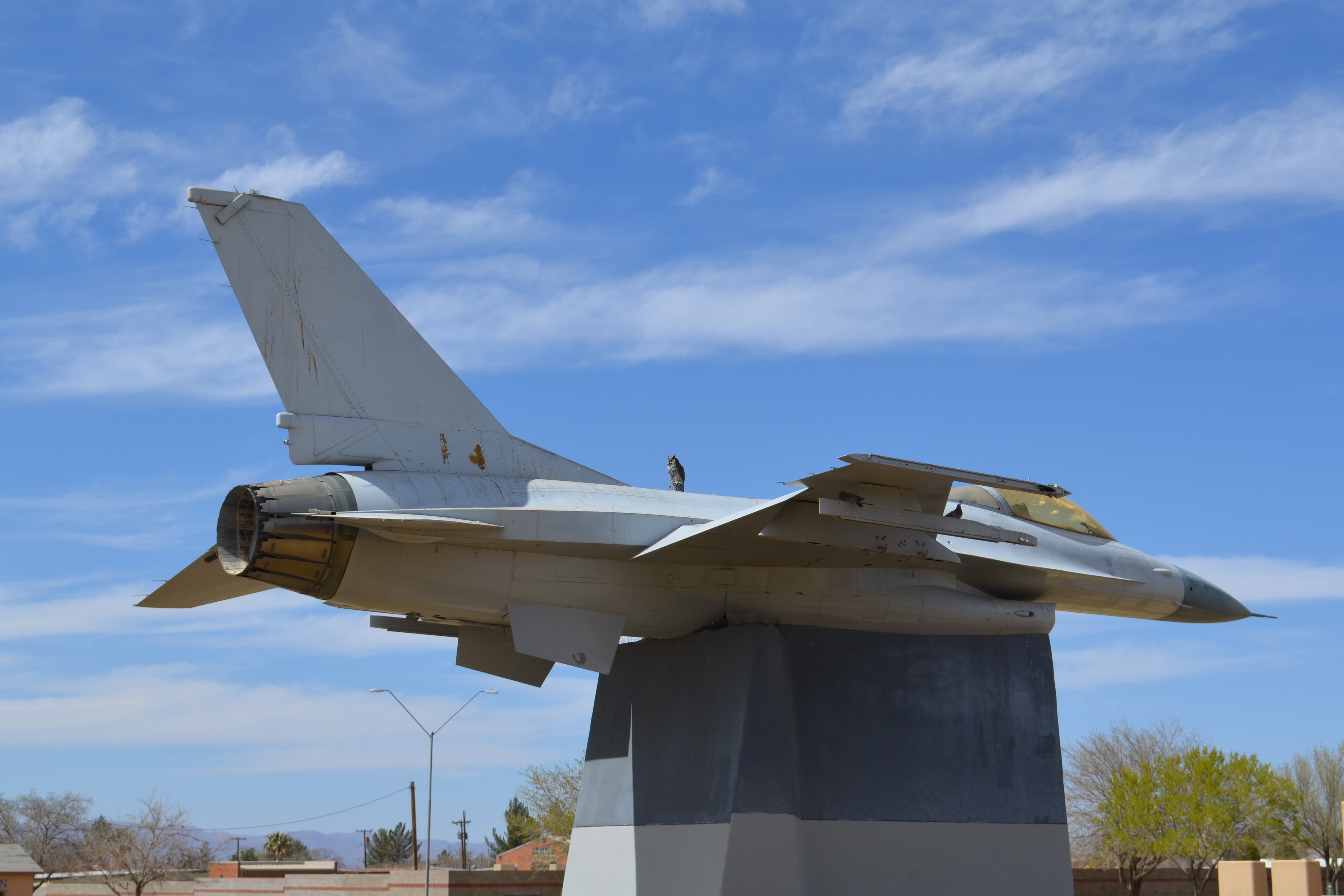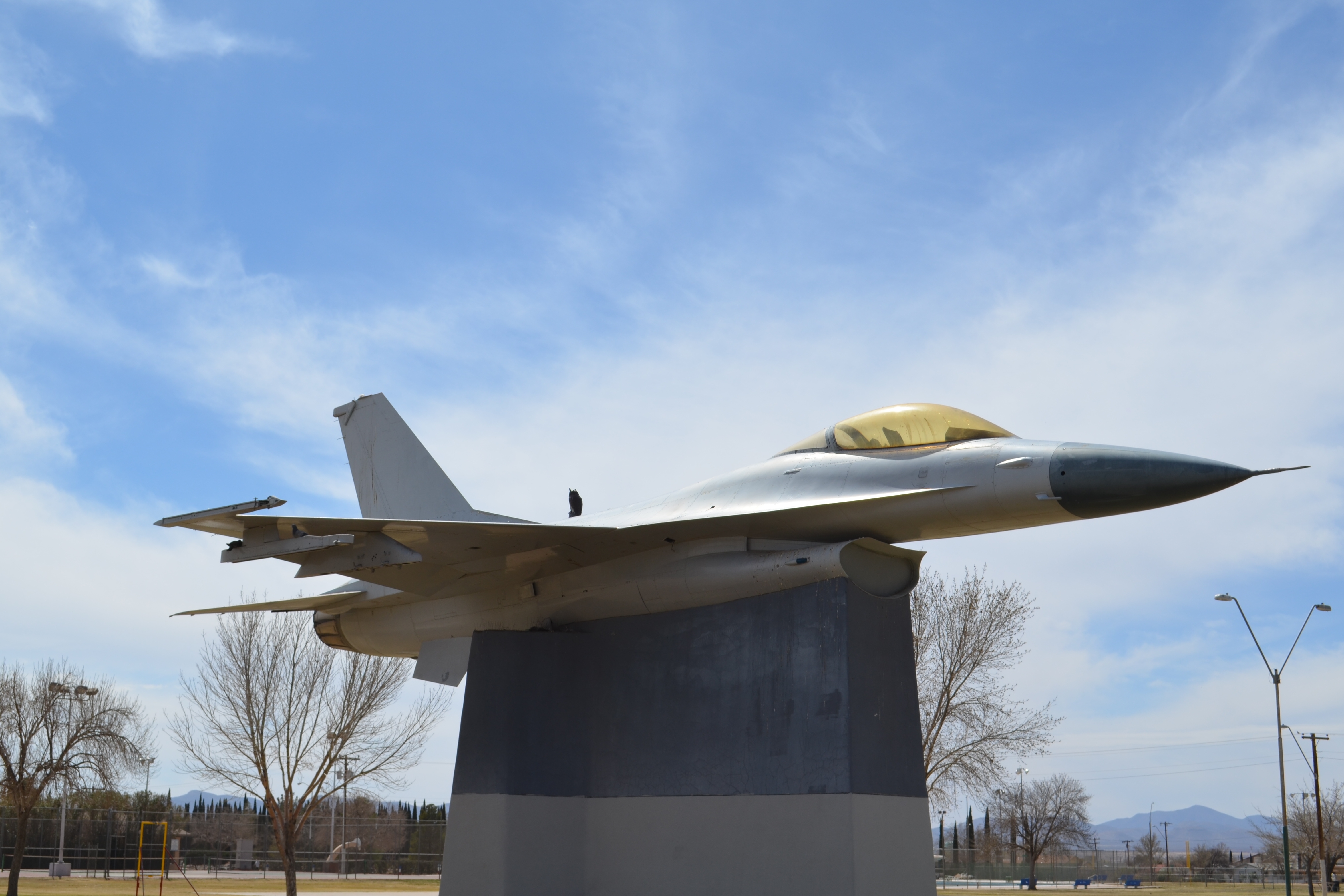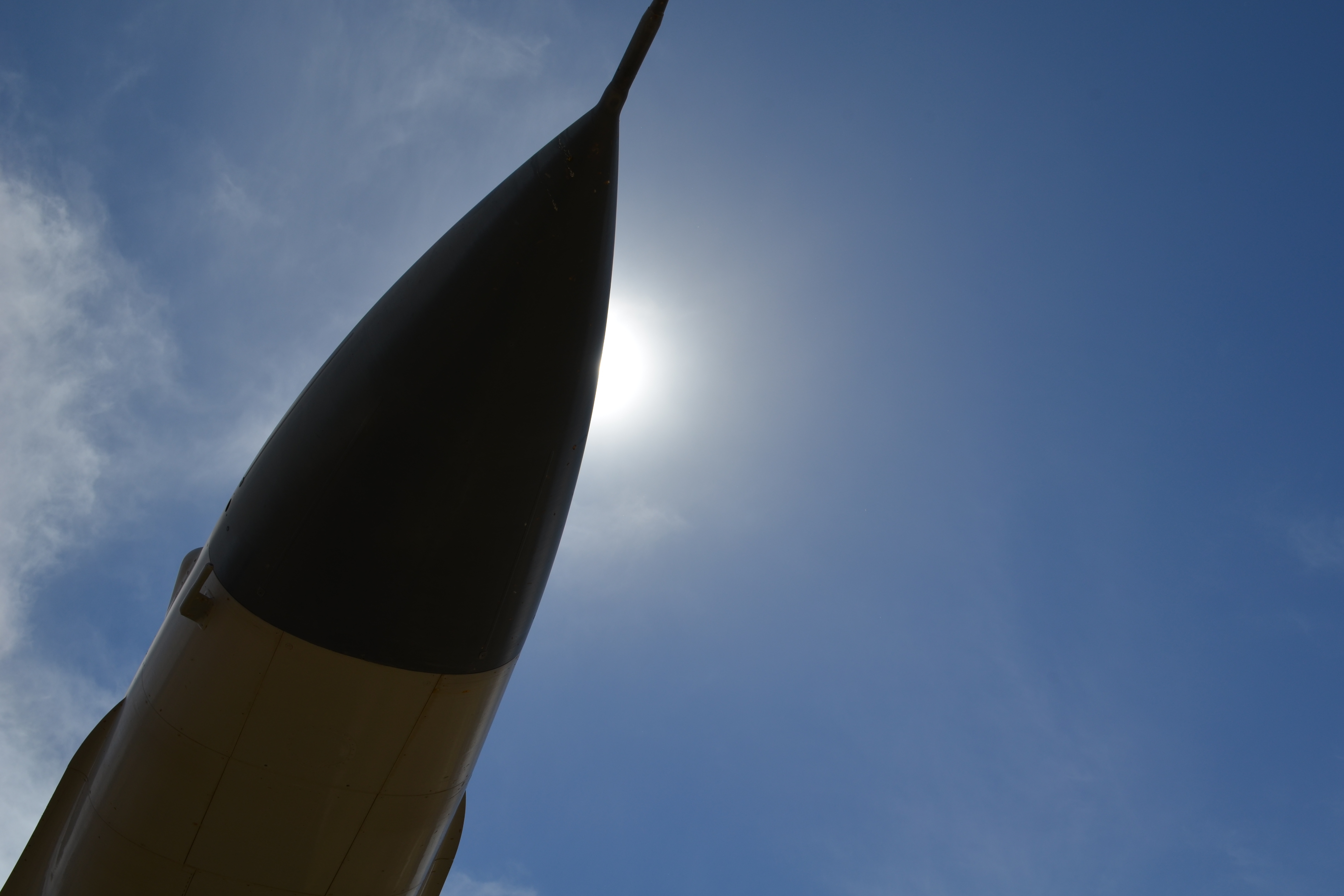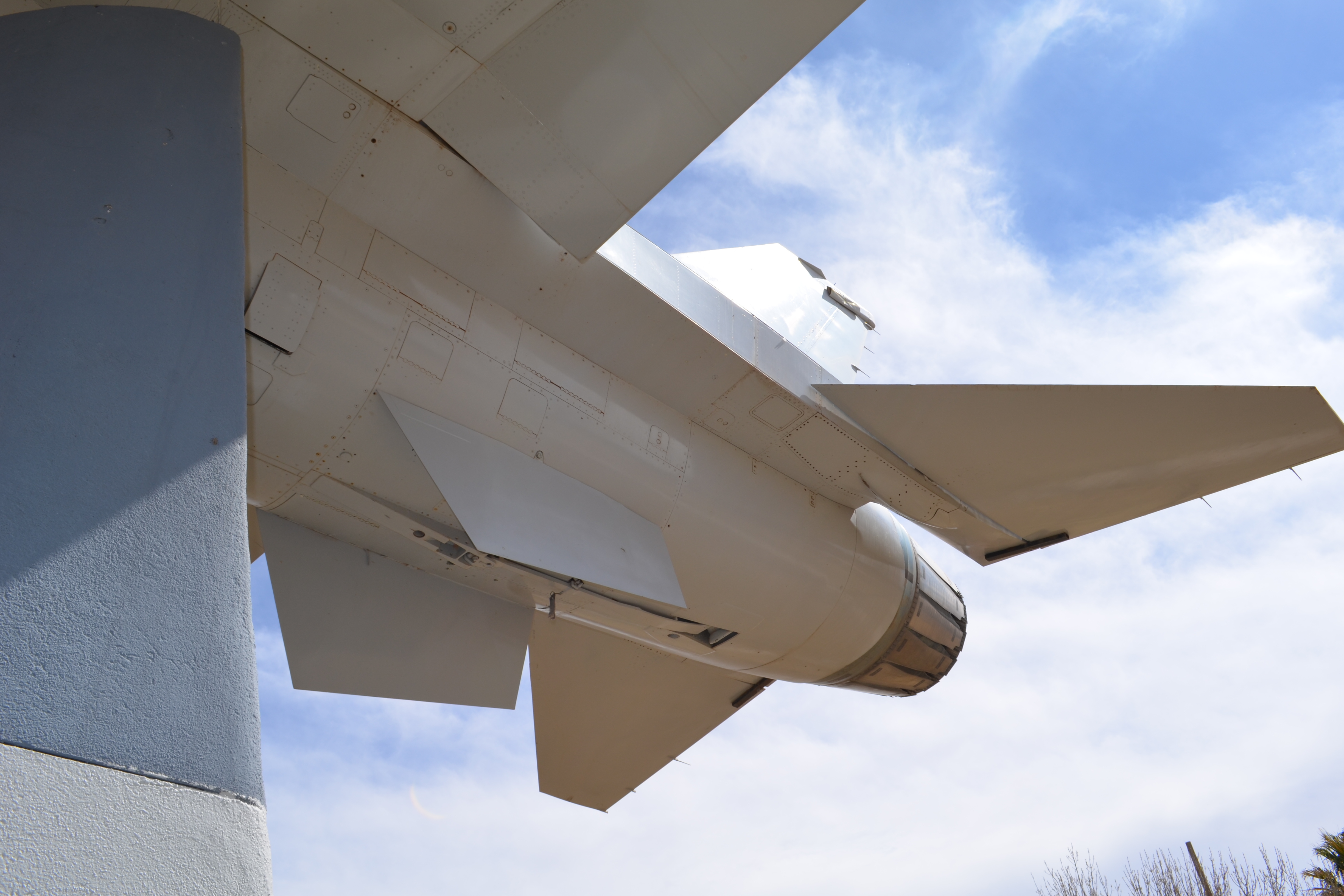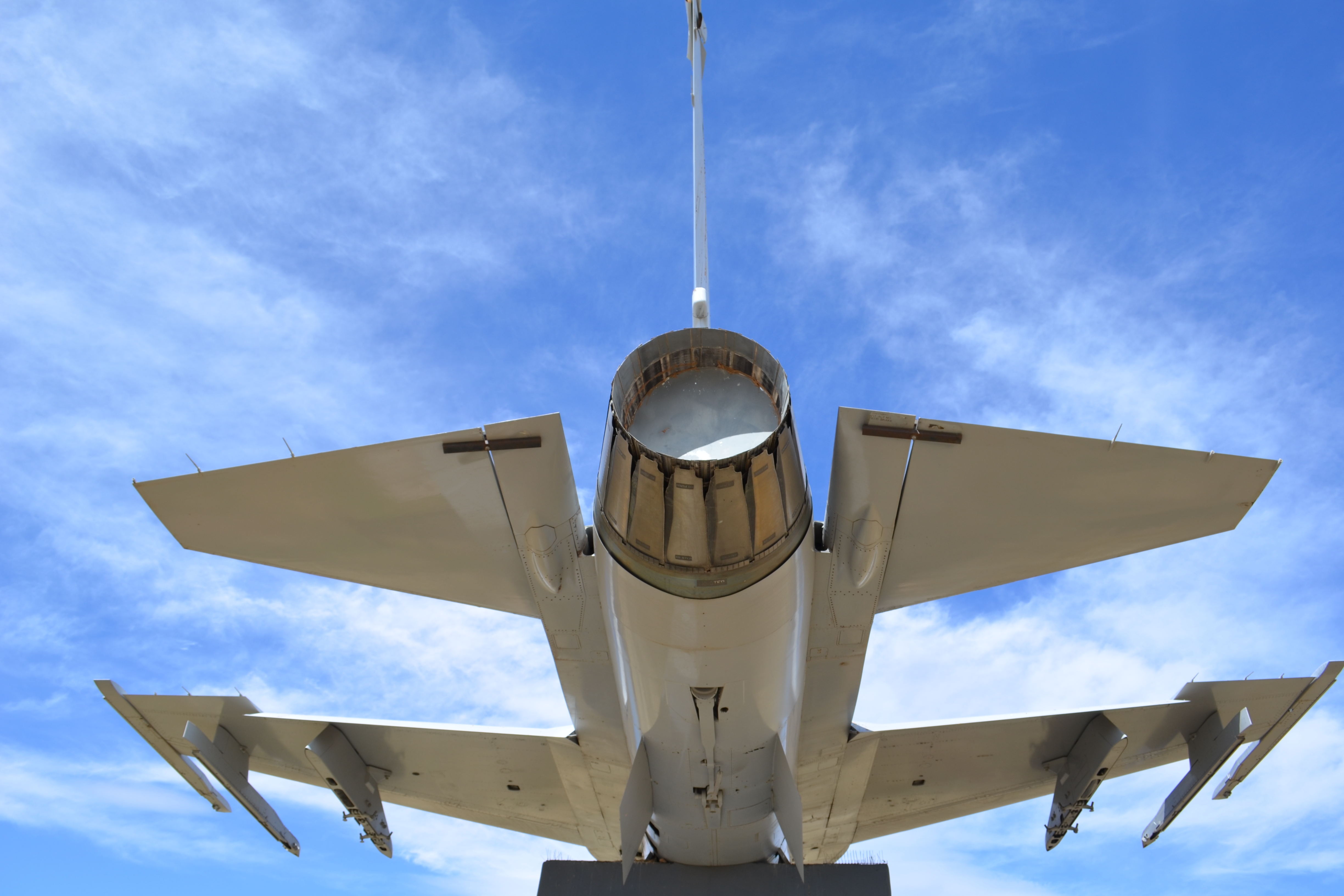

| American Legion Post 109, Corona de Tucson | Arizona Guide | Veteran's Memorial Park, Duncan |
Douglas — Douglas Municipal Airport
Arizona Aviation Museum Guide
Overview - Douglas, Arizona 1,2
Douglas is a city in Cochise County, Arizona, United States. Douglas has a border crossing with Mexico and a history of mining. The population was 14,312 at the 2000 census. According to 2008 Census Bureau estimates, the population of the city is 20,316. Douglas stands on the US/Mexico border, across from the city of Agua Prieta, Sonora, Mexico.
The Douglas area was first settled by the Spanish in the 18th century. Presidio de San Bernardino was established in 1776 and abandoned in 1780. It was located a few miles east of present day Douglas. The United States Army established Camp San Bernardino in the latter half of the 19th century near the presidio and in 1910 Camp Douglas was built next to the town.
Douglas was founded as an American smelter town, to treat the copper ores of nearby Bisbee, Arizona. The town is named after mining pioneer Dr. James Douglas, and was incorporated in 1905. Two copper smelters operated at the site. The Calumet and Arizona Company Smelter was built in 1902. The Copper Queen operated in Douglas from 1904 until 1931, when the Phelps Dodge Corporation purchased the Calumet and Arizona Company and took over their smelter. The Calumet and Arizona smelter then became the Douglas Reduction Works. Douglas was the site of the Phelps-Dodge Corporation Douglas Reduction Works until its closure in 1987. The smoke stacks of the smelter were not taken down until January 13, 1991.
The town was a site of the Arizona Copper Mine Strike of 1983.
In 1916, the Mexican revolutionary leader Pancho Villa threatened to attack Douglas, believing Americans responsible for his defeat at the Second Battle of Agua Prieta.
Douglas was the 1st International Airport of the Americas! Douglas first showed interest in aviation in 1908, when a single plane glider was built in a large frame building located on the 700 block on G Avenue. It was air-lifted by a two horse buggy equipped for release with an aerial hitch.
When visiting the Douglas area, there are two aviation sites that you should visit. The first is the Border Air Museum, located at the Douglas Municipal Airport. The second site is Veterans Memorial Park which has a General Dynamics F-16A Fighting Falcon nicely displayed on a pylon. The Veterans Memorial Park is located approximately one mile east of the airport.
Recently, Lt. Col. Marc Matthews, M.D. (USAF Retired) visited the City of Douglas on 3/12/2012 and supplied us with a cornucopia of photos of the Douglas Municipal Airport, the Border Air Museum, and the General Dynamics F-16A Fighting Falcon on display at a Veterans Memorial Park in Douglas.
Douglas Municipal Airport 4
Douglas Municipal Airport (IATA: DGL, ICAO: KDGL, FAA LID: DGL) is a public airport located two miles (3 km) east of the central business district of Douglas, a city in Cochise County, Arizona, United States. The airport is owned by the city of Douglas. It is not served by any commercial airlines at this time.
- Douglas Municipal Airport
- Douglas Army Airfield
- IATA: DGL - ICAO: KDGL - FAA LID: DGL
- Airport type: Public
- Owner: City of Douglas
- Serves: Douglas, Arizona
- Elevation AMSL: 4,173 ft (1,272 m)
- Coordinates: 31°20'33"N 109°30'23"W
- Aircraft operations: 7,500
- Location: E end of 10th Ave., Douglas, Arizona
- Area: 221.8 acres (89.8 ha)
- Built: 1928
- Governing body: Local
Douglas Municipal Airport (IATA: DGL, ICAO: KDGL, FAA LID: DGL) is a public airport located two miles (3 km) east of the central business district of Douglas, a city in Cochise County, Arizona, United States. The airport is owned by the city of Douglas. It is not served by any commercial airlines at this time.
Facilities and Aircraft
Douglas Municipal Airport covers an area of 640 acres (260 ha) which contains two runways: 3/21 has an asphalt pavement measuring 5,760 x 75 ft (1,756 x 23 m) and 18/36 has a dirt surface measuring 4,095 x 100 ft (1,248 x 30 m). For the 12-month period ending July 31, 2005, the airport had 7,500 general aviation aircraft operations, an average of 20 per day. There is also an Arizona State Prison on the site. The area is all flat desert land.
History - World War II
Construction began on Douglas Municipal Airport in June 1942 for the United States Army Air Forces. Land for the airfield was leased from several ranches by the United States Government from several ranches using War Emergency Powers and turned over to the War Department. Some 2,600 acres were set aside for military use.
Known as Douglas Army Airfield, the base included six operational runways, all over 7,000 ft in length. The runways included 17L-35R, 17R-35L, 8L-26R, 8R-26L, 3L-21R, 3R-21L, and 12-30. 16 taxiways, a parking apron, seven hangars were also constructed at the airfield. Improvements at the base included 418 buildings, sewage treatment facilities, associated utilities, including personnel barracks, warehouses, aircraft storage hangars, a commissary, civilian quarters, service clubs for officers and enlisted men, a small base hospital, as well as vehicular maintenance shops, recreational facilities, supply storage, specialty training, and ordnance buildings, an ordnance storage area, two firing ranges and a skeet range.
The ranges included a machine gun range with 10 targets, a pistol range with 24 targets, and a skeet range with two units. The General Site Plan for the air field lists storage for small arms, pyrotechnic, chemical bomb storage, assembly and maintenance, segregated storage and an underground magazine. Enlisted men used Douglas Air Field to complete the qualification course with the firing of a pistol, rifle, and sub-machine gun. They fired the .45 caliber automatic pistol at different distances and the .30 caliber rifle. They also fired the .45 caliber sub-machine gun at movable targets. Cadets fired these weapons at the pistol and machine gun ranges, and fired shotguns at the skeet range.
In addition to the main base, five auxiliary airfields were constructed in the area for emergency and overflow use:
- McNeal Field (Aux #1): 31°36'21"N 109°39'09"W
- Forrest Field (Aux #2): 31°22'27"N 109°40'30"W
- Webb Coutland (Elfrida) Field (Aux #3): 31°46'24"N 109°41'49"W
- Aux #4: Records of Auxiliary Airfield #4 have been lost to time.
- Hereford Army Airfield (Aux #5): 31°24'57"N 110°08'51"W
The Army activated the former Douglas Air Field on May 28, 1942, as a twin-engine advanced flying school for training bomber pilots. It was also used to train soldiers as post mechanics. Douglas Army Air Field was an advanced flying training school where aviation cadets received their pilot wings and commissions as second lieutenants or appointments as flight officers in the Army Air Force. The base came under the command of 83rd Flying Training Wing (Advanced Twin-Engine), Army Air Forces Western Flying Training Command, headquartered at Santa Ana, California. Aircraft assigned to the base were North American BT-14 Yales, North American AT-6 Texans, Beech UC-78 Bobcats, Curtiss-Wright AT-9 Fledglings, Cessna AT-17 Bobcats, and North American B-25 Mitchells.
Graduates were then sent to III Bomber Command airfields in the southeast for group assignments on Martin B-26 Marauder or North American B-25 Mitchell medium bombers, or twin-engined Lockheed P-38 Lightning IV Fighter Command airfields along the West Coast. Others went to I Troop Carrier Command or Air Transport Command for transport pilot duty.
During World War II, there were about 5,500 troops stationed at Douglas at any one time. It was one of four Army Air Fields in the United States to have both African-American soldiers and WACs, and was the second air field to receive black WACs.
Pilots in Air Transport Command began training at Douglas in June 1944. These pilots ferried replacement planes around the world. In August 1944, North American B-25 Mitchell bomber planes arrived at the former Douglas Air Field replacing the Cessna AT-17 Bobcats and Curtiss-Wright AT-9 Fledglings.
Chemical warfare training also occurred at Douglas Air Field. The only chemical warfare training conducted at the air field was carrying a gas mask. In a memorandum issued in 1943 it was stated that military training would include six hours of instruction in defense against chemical attack as well as the required arms qualifications. From 1943 to 1945, enlisted men, cadets, and Air Transport Command trainees attended various chemical warfare courses including incendiary and decontamination exercises. Quarterly gas chamber exercises were also conducted using tear gas and chlorine gas. In addition to the gas chamber training, the Chemical Warfare Section used several areas at the base for training and storage. They conducted decontamination demonstrations at one end of the Officers' Athletic Field. They used a warehouse in the Ordnance Area for segregation of supplies and ammunition.
The Air Training Command maintained the former Douglas Air Field on temporary inactive status starting on October 31, 1945. The site was declared surplus on April 25, 1947. Custody of the site was assumed by the War Assets Administration (WAA) on November 1, 1947. The WAA transferred ownership of 2,774 acres to Cochise County on May 13, 1949 by quitclaim deed. WAA Real Property classification documents dated April 8, 1948, indicated that the exchange agreement for acquisition of 31 acres was not complete. It is assumed that these 31 acres were leased from the State of Arizona and were returned upon declaring the site as surplus.
Bisbee-Douglas International Airport
The former Douglas Air Field is currently owned by Cochise County. On May 13, 1949, the U.S. government, acting through the War Assets Administration deeded the Douglas Army Airfield to Cochise County. The airfield was named Bisbee-Douglas International Airport and plans were made by the county to prepare the airport to serve as the major air commerce facility in the region.
In 1949-50, the base administration building was remodeled to serve as an airline terminal building. It included offices for airport and airline administration, a passenger lobby, restaurant, rest rooms, and a Flight Service Station. The terminal building remains today, for the most part, in its 1950's vintage configuration.
The first Airport Layout Plan (ALP) record drawing for the Bisbee-Douglas International Airport was prepared by Johannessen & Girand Engineers - Phoenix, Arizona in 1956. The 1956 ALP recommended that Runways 17L-35R, 12-30, and 8R-26L be phased out, along with many taxiways and some of the bituminous aircraft parking aprons. The 1956 plan also recommended development of an industrial area where the current state prison now resides.
The ALP was updated by Blanton & Company of Tucson, Arizona in 1967. By this time, the three runways and their serving taxiways had been phased out. During the 1960s, BDI had scheduled airline service. The critical aircraft being used was the Boeing 727 and Douglas DC-7. The ALP reflected design for these types, and recommended ultimate design for use by the Boeing 747. Recommendations also included extension of Runway 17-35 to an ultimate length of 10,290 ft (existing length is 7,290 ft).
The ALP was again updated by Blanton & Company in 1974. This document indicates that the three "phased out" runways were again active, although they were probably not actually usable because of their condition. The recommended extension of Runway 17-35 is continued, along with ultimate installation of an Instrument Landing System (ILS) approach to Runway 17. In 1974, a new 25,000 gallon elevated water tower was constructed. The tower is 140 feet tall, and is lighted with double-fixture obstruction lights.
A 1975 improvement project (ADAP 7-04-0013-01) included replacement of the Medium Intensity Runway Lighting (MIRL) system for Runways 17-35 and 8-26. The electrical vault was rehabilitated at this time, and taxiway guidance signs and a Visual Approach Slope Indicator (VASI-2) system was installed on Runway 17-35. Project engineers were Blanton & Company.
Over recent years, there has been relatively little development activity at the Bisbee-Douglas International Airport.
Douglas Municipal Airport (3/12/2012), Douglas, Arizona (Photos by AFIA)
“Douglas International Airport … A Port of Entry” ²
Douglas was the 1st International Airport of the Americas! Douglas first showed interest in aviation in 1908, when a single plane glider was built in a large frame building located on the 700 block on G Avenue. It was air-lifted by a two horse buggy equipped for release with an aerial hitch.
The first in-coming flight to Douglas was in 1911. The plane landed behind the old YMCA building at the west end of 10th street. In 1913, planes that were used in the Mexican Revolution came to Douglas. Five years later, after World War 1, the barnstormers arrived. The city had purchased the airport in 1928, a dirt runway was built connecting Douglas and Agua Prieta. Airplane passengers could land in Douglas and taxi through the runway gate into Mexico.
Douglas International Airport was the first international airport in the Americas. It was considered the finest airport in Arizona and was the first in the state to have night lights. In the 1930's the airport was one of the stopping points for American Airlines. Frontier Airlines and others.
“Douglas International Airport” (3/12/2012), Douglas Municipal Airport, Douglas, Arizona (Photos by AFIA)
Border Air Museum ²
Border Air Museum ²
1100 Airport Road
Douglas, Arizona 85607
(520) 364-4927
The aviation history of Douglas, Arizona is archived at the Border Air Museum. The Border Air Museum was a gift to the city by the deceased, Richard Westbrook, Class of 1949 and his wife Irma. Richard and Irma Westbrook established the Border Air Museum to house his collection of air history that he had researched for a number of years. His labor of love of aviation is seen in the building he created on his own with donations from friends. The City of Douglas begin to open it up on a regular basis in 2007. The museum operates under the Douglas Visitor Center and is staffed by volunteers. Photos, newspaper articles, original airplane photos, letter of the President of United States Roosevelt declaring the air port "The First International Airport of the Americas, an Emigh Trojan-2 (NC8301H) airplane that was built in Douglas, American Airlines memorabilia, maps.
Border Air Museum, Douglas Municipal Airport (3/12/2012), Douglas, Arizona (Photos by AFIA)
Emigh Trojan-2 (NC8301H, s.n) on display (3/12/2012) at the Border Air Museum, Douglas Municipal Airport (3/12/2012), Douglas, Arizona (Photos by AFIA)
Assorted Memorabilia and Displays, Border Air Museum, Douglas Municipal Airport (3/12/2012), Douglas, Arizona (Photos by AFIA)
Veterans Memorial Park
E. 8th Street & Florida Avenue
Douglas, AZ 85607 5
Just a short distance away from the Douglas Municipal Airport and the Border Air Museum is the City of Douglas Veterans Memorial Park. The City of Douglas has a General Dynamics F-16A Block 10 Fighting Falcon (AF 79-0312, c/n 61-97) nicely displayed on a pylon. The aircraft is located at the center of the park. The park is bounded by E. 8th Street on the North, Florida Avenue (East), E. 5th Street (South) and Dolores Avenue (West). Be sure to check out this display.
Veterans Memorial Park (3/12/2012), Douglas, Arizona (Photos by AFIA)
General Dynamics F-16A Block 10 “Fighting Falcon” (AF 79-0312, c/n 61-97) on display (3/12/2012) at Veterans Memorial Park, Douglas, Arizona (Photos by AFIA)
Base Memories[6]
“I just happened on your informative web site searching for info on the 410th Army Air Force Band. While your focus is on aircraft, here is a limited bit of history related to the Douglas Air Field.
The band was stationed at Douglas, AZ in WWII. My mother's cousin William Biesel (born Oct. 3, 1905), was posted to that band after his basic training and served there until his discharge Nov. 11, 1944. Prior to draft he had been a professional musician and violin instructor. In the AAF band he played clarinet.
I remember him telling me the band played locally and traveled from Douglas to regional military installations for concerts (and sometimes dances at the posts. Their job was to entertain the troops. I know of one photo from Douglas showing the 410 Band logo. If I have the story correct, Glenn Miller became the leader of he 410th band, and it came to have nationwide recognition.
I believe the military may have maintained a recreational facility for the troops in the Chiricahua Mountains near or west of Portal, AZ. I have a photo of Bill and others in uniform near some military vehicles with a military type wood frame building behind and cliffs in the background. I recognize those cliffs as being in Cave Creek Canyon in the Chiricahua Mountains.
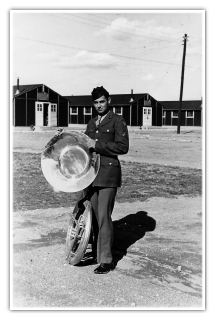
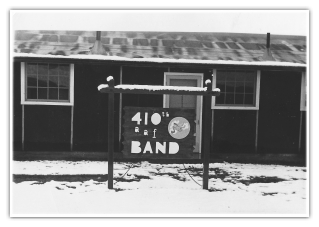
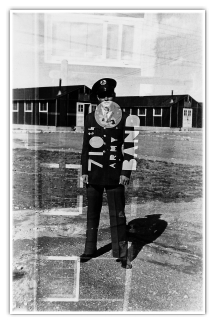
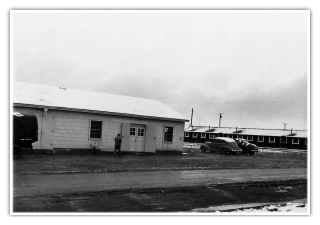
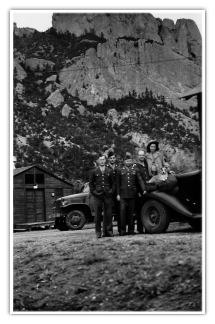
Thanks so much for your huge efforts preparing and maintaining your website. I will be visiting to learn more. My father was career Air Force from 1942 until the 1960's. I live in Arizona.”
Special Thanks
A very special thanks to Lt. Col. Marc Matthews, M.D. (USAF Retired) for providing us with photos of the aircraft at this location.
References
- Wikipedia, Douglas, Arizona
- Border Air Museum, website (PDF)
- Google Earth, Satellite Image
- Wikipedia, Douglas Municipal Airport, Arizona
- Douglas, website
- Photos by Lt. Col. Marc Matthews, M.D. (USAF Ret.), 3/12/2012
- Hill, Ron. 2/16/2018 email: Douglas AZ Air Field WWII
Copyright © 1998-2018 (Our 20th Year) Skytamer Images, Whittier, California
All rights reserved




























![Douglas Municipal Airport and the Border Air Museum, Douglas, Arizona (Google Earth Satellite Image) [3]](https://www.skytamer.com/6.1/AZ/DouglasBorderAirMuseum600.jpg)




























































































![Google Earth satellite view of the Veterans Memorial Park at E. 8th Street & Florida Avenue showing the General Dynamics F-16A Block 10 “Fighting Falcon&rquo; (AF 79-0312) circled in red. [3]](https://www.skytamer.com/6.1/AZ/DouglasF-16600.jpg)

